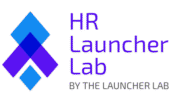
For small and growing businesses, every new hire is a crucial part of your journey. Yet, without a structured onboarding process, even the most talented newcomers can feel lost, overwhelmed, and disconnected before they’ve even begun to contribute. This frustration can lead to early turnover, low productivity, and poor morale—all things no small business can afford.
Imagine hiring a promising team member, only to lose them within weeks because they felt unsupported or unclear about their role. Unfortunately, it happens too often, with up to 20% of new hires leaving within their first 45 days. But it doesn’t have to be this way. A well-planned, repeatable onboarding process can make a world of difference, boosting confidence, increasing loyalty, and helping your hires feel like valued members of your team from day one.
In this guide, we’ll walk you through how to build an onboarding framework that drives retention and sets your new hires up for long-term success. From pre-boarding through the first 90 days, we’ll break down each step in clear, actionable terms, so you can create a welcoming, organized experience that keeps your talent engaged and thriving.
Disclaimer #
The information on this site is meant for general informational purposes only and should not be considered legal advice. Employment laws and requirements differ by location and industry, so it’s essential to consult a licensed attorney to ensure your business complies with relevant regulations. No visitor should take or avoid action based solely on the content provided here. Always seek legal advice specific to your situation. While we strive to keep our information up to date, we make no guarantees about its accuracy or completeness.
This content may contain affiliate links, meaning we receive a commission if you decide to make a purchase through our links, at no cost to you.
For more details, refer to our Terms and Conditions.
